
Contra is a 1987 run and gun video game developed and published by Konami for arcades. A home version was released for the Nintendo Entertainment System in 1988, along with ports for various home computer formats, including the MSX2. The arcade and computer versions were localized as Gryzor in Europe, and the NES version as Probotector in the PAL region.

An Elder Scrolls Legend: Battlespire is an action role-playing video game developed and published by Bethesda Softworks, set in the world of The Elder Scrolls.

Air Fortress is an action-adventure video game developed and published by HAL Laboratory for the Nintendo Entertainment System. It was released in Japan in August 1987, in North America in September 1989 after an initial test release of 385 copies in 1987, and an Australian release in 1989.

Lunar: The Silver Star is a role-playing video game developed by Game Arts in association with Studio Alex for the Sega/Mega-CD, originally published by Game Arts and released in Japan in 1992. After a successful release, the game was translated and localized by Working Designs for release in North America the following year.

Resident Evil Outbreak: File #2 is a survival horror video game developed and published by Capcom with online playability for the PlayStation 2. It is the sequel to Resident Evil Outbreak, and the final installment of the spin-off series. It was released on September 9, 2004 in Japan, on April 26, 2005 in North America, and August 26, 2005 in PAL regions.

Challenger is an action-platform video game developed and published by Hudson Soft for the Famicom in 1985.
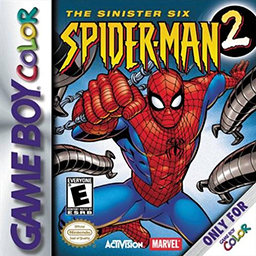
Spider-Man 2: The Sinister Six is a 2001 platform video game based on the Marvel Comics character Spider-Man. It was developed by Torus Games and published by Activision for the Game Boy Color. The game released on May 18, 2001. It is a sequel to Spider-Man (2000) Game Boy Color version.

Golden Axe II is a side-scrolling beat 'em up video game developed and published by Sega, first released on the Sega Mega Drive in December 1991. It is the home console sequel to the popular game Golden Axe, marking the second game in the series, though the arcade did see a followup of its own in 1992, titled Golden Axe: The Revenge of Death Adder. Golden Axe II was only released on the Mega Drive, while the original was released on many other platforms. The game later appeared in Sonic's Ultimate Genesis Collection for Xbox 360 and PlayStation 3, as an iOS app on iTunes, and on the Nintendo Switch Online + Expansion Pack.
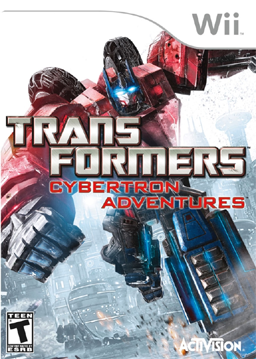
Transformers: Cybertron Adventures is an action-adventure video game based on the Transformers franchise, developed by Next Level Games and published by Activision. It is a companion game to High Moon Studios' Transformers: War for Cybertron, released exclusively for the Wii in June 2010. Like War for Cybertron, it features separate campaigns for the Autobots and the Decepticons, with the player being able to choose either faction to play as. The game received mixed to negative reviews from critics.
Lone Survivor is a survival horror and indie game developed by Jasper Byrne under the name "Superflat Games". It was originally released as a Flash game for Microsoft Windows and OS X in 2012. It was later ported to the PlayStation 3 and PlayStation Vita and released on the PlayStation Network in 2013 as Lone Survivor: The Director's Cut by Curve Studios. The Director's Cut came out on Microsoft Windows and OS X as a free update on 31 October 2013. In October 2014 the game was also made available for the PlayStation 4 and Wii U. The title was released in physical format on PlayStation 4 and PlayStation Vita on December 30, 2016 through Limited Run Games. A remake of the game, titled Super Lone Survivor released for Nintendo Switch and Microsoft Windows on October 31, 2022.

Edge of Nowhere is an action-adventure virtual reality video game developed by Insomniac Games and published by Oculus Studios. The player controls adventurer Victor Howard as he ventures into Antarctica in order to find his fiancée's lost expedition while encountering unworldly beasts. Edge of Nowhere is based on the work of H.P. Lovecraft, At the Mountains of Madness. The game released on June 6, 2016, exclusively for the Oculus Rift virtual reality headset on Microsoft Windows.
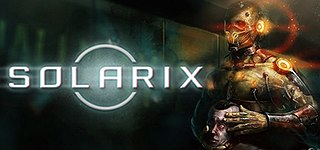
Solarix is a 2015 Science-Fiction Stealth-based first-person shooter survival horror video game developed by Pulsetense Games and published by KISS Ltd for Windows OS. It was developed using the Unreal Development Kit and is the first video game developed by the Turkish-based Pulsetense Games. The game is intended as a homage to stealth-focused first-person video games of the late 1990s and early 2000s, particularly System Shock 2 and the Thief series. It was released on April 30, 2015 on the Steam digital distribution service. It has received mixed reviews.
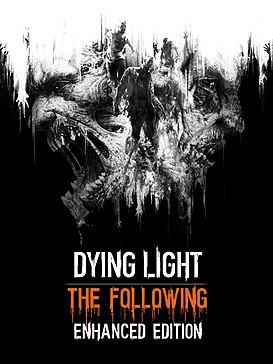
Dying Light: The Following is an expansion pack for the 2015 survival horror game Dying Light. The game was developed by Techland, published by Warner Bros. Interactive Entertainment, and released for Linux, Windows, PlayStation 4, and Xbox One on February 9, 2016. The expansion adds characters, a story campaign, weapons, and gameplay mechanics.

Party Hard is an action stealth video game developed by Pinokl Games and published by tinyBuild for Microsoft Windows, OS X, Linux, PlayStation 4, Xbox One, and Nintendo Switch. A mobile port, Party Hard Go, was released for Fire OS, iOS, and Android. In the game, players assume the role of a serial killer who infiltrates several parties with the objective of killing all attendants without getting caught.

Commander Keen in Invasion of the Vorticons is a three-part episodic side-scrolling platform video game developed by Ideas from the Deep and published by Apogee Software in 1990 for MS-DOS. It is the first set of episodes of the Commander Keen series. The game follows the titular Commander Keen, an eight-year-old child genius, as he retrieves the stolen parts of his spaceship from the cities of Mars, prevents a recently arrived alien mothership from destroying landmarks on Earth, and hunts down the leader of the aliens, the Grand Intellect, on the alien home planet. The three episodes feature Keen running, jumping, and shooting through various levels while opposed by aliens, robots, and other hazards.

Left Alive is a 2019 action-adventure stealth game developed by Ilinx and published by Square Enix. It was released in February and March 2019 for the PlayStation 4 and Windows platforms. It was announced at a press conference by Sony Interactive Entertainment before the 2017 Tokyo Game Show. Set in the universe of the Front Mission series of videogames, the story follows several individuals trying to survive amidst a surprise invasion of their country, while both helping civilians to safety and attempting to stop destruction and damage wrought by Wanzers, a form of combat mecha.
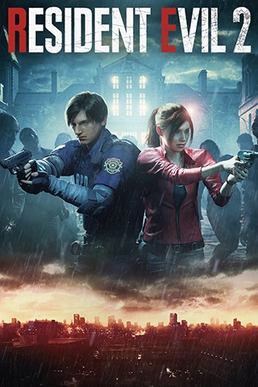
Resident Evil 2 is a 2019 survival horror game developed and published by Capcom. A remake of the 1998 game Resident Evil 2, it was released for PlayStation 4, Windows, and Xbox One in January 2019 and for Amazon Luna, PlayStation 5, Xbox Series X/S and Nintendo Switch in 2022. Versions for iOS, iPadOS, and macOS were released in December 2024. Players control the rookie police officer Leon S. Kennedy and the college student Claire Redfield as they attempt to escape Raccoon City during a zombie outbreak.

Resident Evil: Resistance is a 2020 survival horror game developed by NeoBards Entertainment and published by Capcom as the online component for Resident Evil 3. Released for PlayStation 4, Windows, and Xbox One, it involves four survivor players competing against a mastermind player who can create traps, enemies and other hazards. Resistance is set during the Raccoon City outbreak, featuring some of the characters from Resident Evil 2 and 3. Resident Evil 3 producer Peter Fabiano confirmed that Resistance is non-canon as it is "impossible to fit in the actual timeline". The game received mixed reviews from critics, who criticized the game for being unbalanced, having technical issues and for lacking dedicated servers.

Alien Mind is an action-adventure game for the Apple IIGS, published and released by PBI Software in 1988. It is the final game from PBI, and notable as a GS-only title, in taking advantage of the graphics and sound capabilities of the machine to present an arcade style game.

Star Wars Jedi: Survivor is a 2023 action-adventure game developed by Respawn Entertainment and published by Electronic Arts. The game is the sequel to Star Wars Jedi: Fallen Order (2019), taking place five years after the events of the previous game and continuing the adventure of young Jedi Knight Cal Kestis, as he and his friends continue in their struggle to survive the tyranny of the Galactic Empire while racing against a corrupted High Republic Jedi to reach a shrouded planet that can serve as a safe haven for those oppressed by the Empire. As with its predecessor, Survivor's structure was inspired by Metroidvania games, with gameplay split between combating hostile enemies using Cal's lightsaber and Force powers, platforming, and puzzle-solving.



















